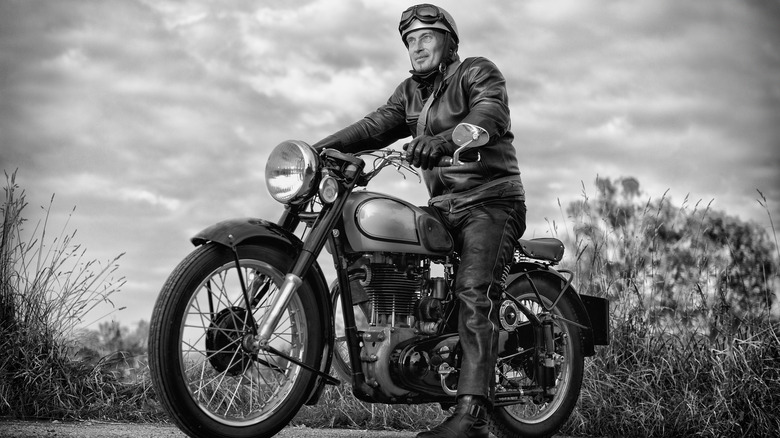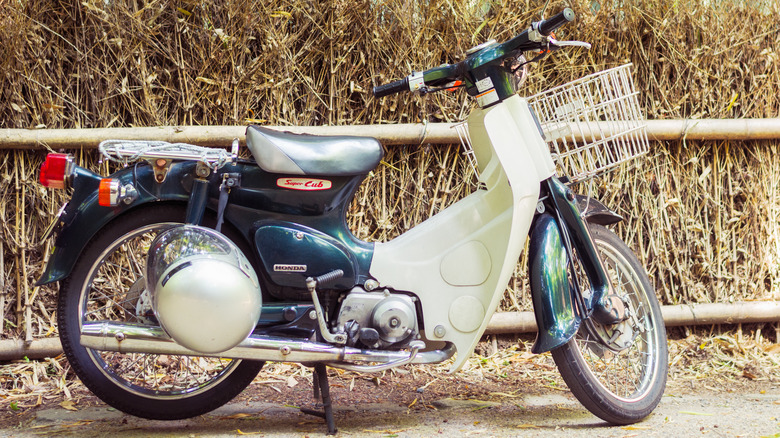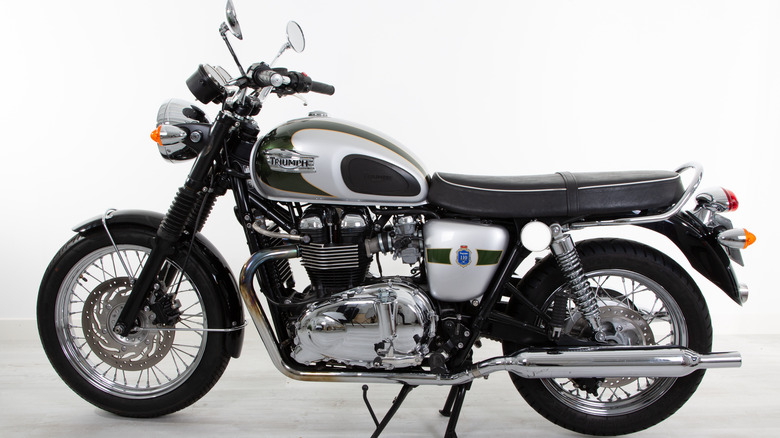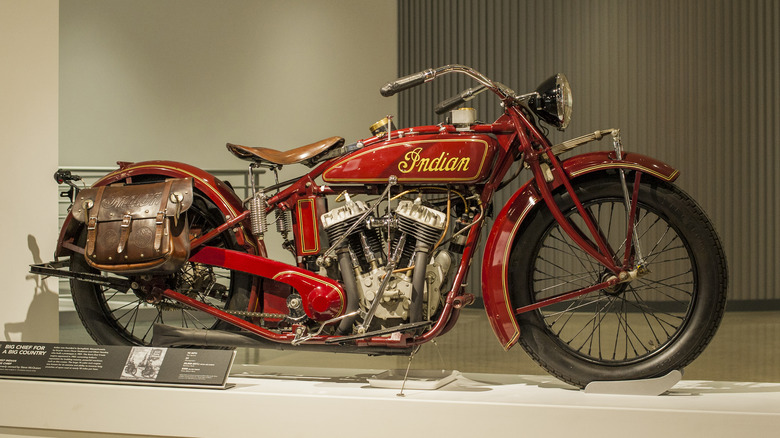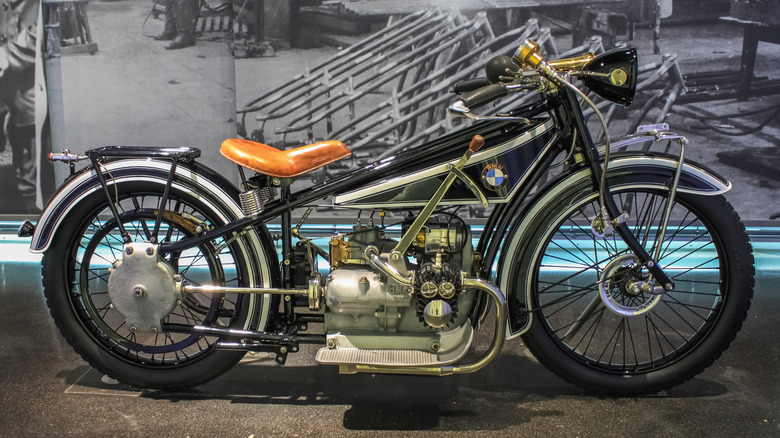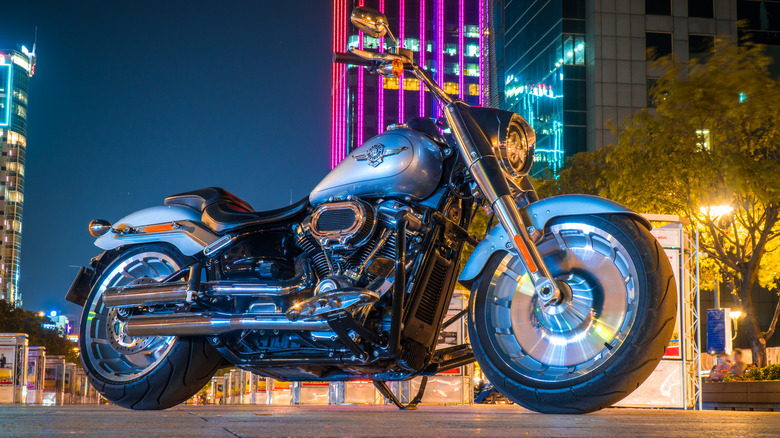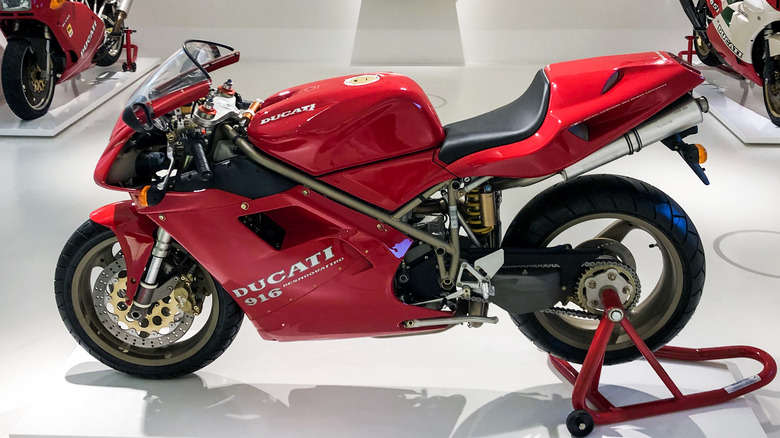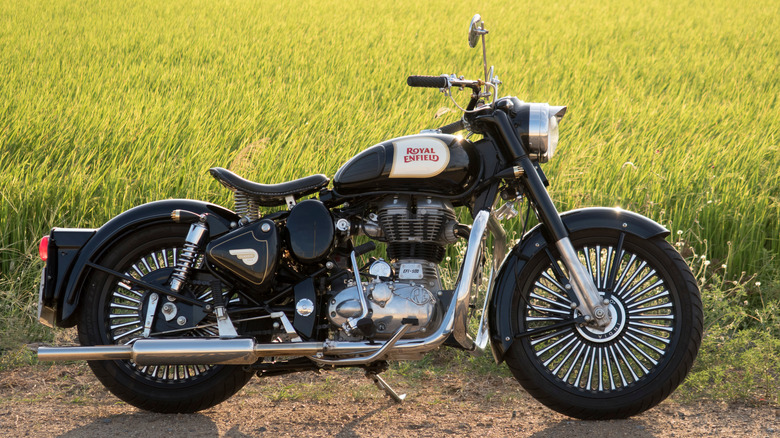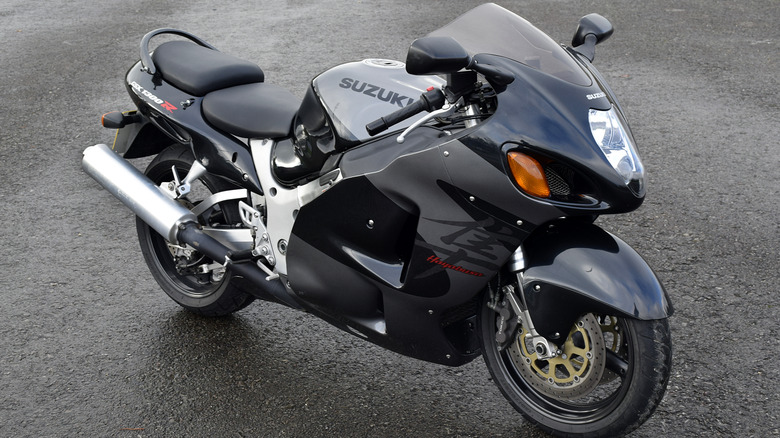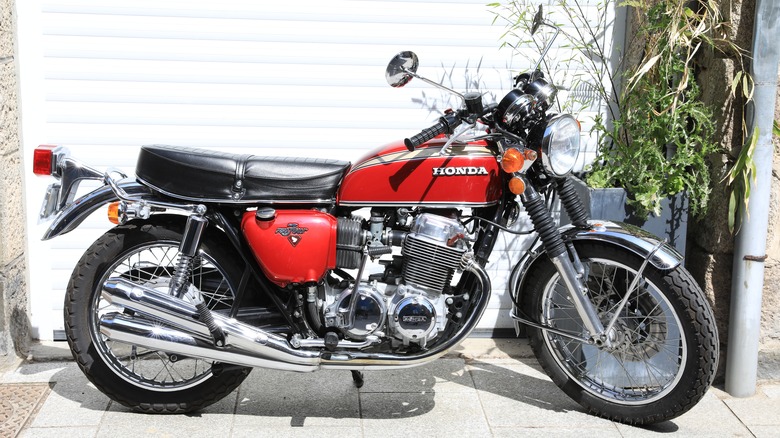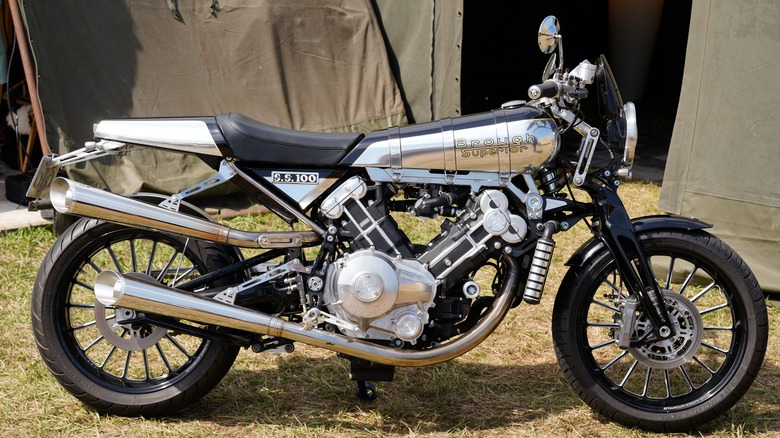10 Of The Most Iconic Motorcycles Of All Time
Motorcycles have long been symbols of freedom, rebellion, and innovation. An iconic motorcycle is like a time capsule, preserving the essence of an era and transporting riders back in time. But for a motorcycle to achieve iconic status, there's a long road to take, and a combination of factors has to be considered.
Some motorcycles break the mold and leave a lasting impact through innovative design, elevating industry standards. Others employ new engineering that changes how motorcycles are built and ridden. And let's not forget the ones with cultural impact that have us yearning for the good old days, reminding us of historical events and popular films.
Our favorite motorcycle brands have storied histories and reputations that reflect their reliable performance and popularity. But these motorcycles have transcended to something even greater. Let's explore some of the most iconic motorcycles ever built. Join us as we take a ride through history and look at the bikes that have defined generations and continue to inspire new riders today.
Honda Super Cub (1958-Present)
Honda's Super Cub motorcycle is legendary. One cannot talk about iconic motorcycles and not mention the best-selling, not just motorcycle, but motor vehicle in history, with over 100 million units sold since its introduction in 1958.
One of the main selling points that made this the go-to motorcycle for almost anyone, especially in developing countries, was Honda's innovative approach to advertising the Super Cub in women's magazines and promoting it as a vehicle easy enough for anyone to ride, not just men.
Demand was so high that Honda decided to build a dedicated factory in Suzuka, Japan. At the time, it was the largest motorcycle factory in the world, pumping out up to 50,000 SuperCubs a month, making it the most produced motorcycle in the world.
Keeping operation of the vehicle simple was key, and this led to the development of the semi-automatic centrifugal clutch. This got rid of the need for a manual clutch lever so riders could just shift gears using their foot.
Technical innovations saw the Super Cub fitted with a 50cc 4-stroke engine instead of the typical 2-stroke popular at the time, which offered better fuel efficiency and reliability. Since then, the Super Cub has stood the test of time over the decades, and while modern takes offer advancements to the motorcycle, it still retains its signature classic design.
Triumph Bonneville (1959-Present)
Triumph motorcycles are famous for setting many land speed records, and this one — named after the Bonneville Salt Flats in Utah — is literally built for speed.
The Bonneville was the go-to choice for many celebrities of the 1960s, like Bob Dylan, Marlon Brando, Clint Eastwood, James Dean, and Steve McQueen, and it was featured in many films associated with the counterculture of the time. These days, even Olivia Munn rides a Triumph Bonneville.
The original model was the T120, with a 650cc twin-cylinder engine popular for its performance and sleek design. It was also an easily attainable motorcycle — any 18-year-old could walk right up, sign a hire-purchase credit agreement, and ride on out with a new Triumph.
What makes the Triumph Bonneville uniquely iconic is its push toward targeting the younger demographic of potential motorcycle riders. After the war, there was an economic boom that saw many young folk with disposable income — and what better purchase than a Triumph? This motorcycle brings back nostalgia for many. Much like the thrill of a first kiss, one can look back fondly and remember the thrill of their first Triumph Bonneville.
Indian Chief (1922-1953, revived in 1999)
The Indian Chief is a timeless motorcycle that always turns heads. This iconic piece of history was produced from 1922 until 1953 when the company eventually encountered financial issues that resulted in a halt in production.
Although it has had its own bumpy road, this remains a chief American motorcycle. The first models had several innovative features, like a gearbox bolted to the engine casing, a helical gear train versus a chain drive, a wet clutch, and dual camshafts.
In 1940, a distinctive design was added — the full-skirted fender became a hallmark and instantly recognizable aspect of an Indian motorcycle. These early designs and features would evolve, and after the Second World War, the Indian Chief was the only pre-war model still was in production. Updates to the original motorcycle included telescopic forks in 1950 and an increased engine size up to 1,300cc.
When thinking about iconic motorcycles, picture the famous "Warbonnet" logo on the tank and recall the Indian Chief. In 1999, there was a brief revival, but ultimately, the company faced bankruptcy. These classic motorcycles still remain in the hearts of Indian Chief enthusiasts.
BMW R32 (1923-1926)
The R32 was BMW's first successful motorcycle, setting the foundation for the company's future. Produced from 1923 to 1926, it was unveiled at the Berlin Motor Show and later showcased at the Paris Motorcycle Show. It was unlike any other motorcycle manufactured at the time.
The bike came equipped with a 494cc M2B33 flat-twin (boxer) air-cooled four-stroke engine with a three-speed manual transmission that put out 8.5 horsepower at 3,200 RPM and could hit a top speed of a whopping 59 mph. At the time, chain drives were the norm, but the R32 had a unique shaft drive system instead.
You can't talk about the R32 without overlooking the interesting and novel feature of its recirculating wet-sump oiling system, which was superior and cleaner than the total-loss oiling systems other motorcycles had at the time.
With its low center of gravity and short 54-inch wheelbase paired with 26-inch wheels, it was a safe touring motorcycle that could handle rougher terrain. The BMW R32 is still cool, even after 100 years.
Harley-Davidson Fat Boy
I think it's safe to say we've all seen the iconic movie scene in "Terminator 2," where the T-800 (Arnold Schwarzenegger) rides the Harley-Davidson Fat Boy in pursuit of a young John Connor (Edward Furlong). The motorcycle symbolizes the film's raw, rugged, and powerful nature, just as much as the T-800. First launched in 1990 by Willie G. Davidson, the Harley-Davidson Fat Boy is one of the best models in the company's history.
You may be wondering where the name "Fat Boy" came from, too. While there are rumors out there, Willie G. claims that due to the motorcycles massive, fat look, the name "Fat Boy" stuck.
The iconic motorcycle has also seen its fair share of design and technical modifications over the years. Starting with a 1340cc engine in 1990 and then a 1,450cc twin-cam engine in 1999, the Fat Boy got even fatter in 2007, with its engine increasing to 1,584cc and the transmission upgraded to a six-speed.
As of 2018, and following the "Fat" theme, new models have a 'Milwaukee Eight' 1746 or 1868cc engine with fatter wheels. The Harley-Davidson Fat Boy just keeps on getting bigger and bigger. It's even been immortalized as a Lego toy.
Ducati 916 (1994-1998)
When it comes to superbikes, the Ducati 916, which was produced from 1994 to 1998, is often referred to as the "Michelangelo of Motorcycles." Designed by Massimo Tamburini, the Ducati 916 was a work of art — Motorcycle News Magazine called it "the most beautiful bike of the last 50 years" in 2014. It certainly made our list of head-turning motorcycles that defined the 90s.
The motorcycle featured a 916cc liquid-cooled V-twin engine and put out around 114 horsepower at 9000 rpm, hitting max speeds of up to 161.6 mph. This was complimented with a tubular steel Trellis frame that had a single-sided swingarm and USD fork on the front end adding to its agility and precise handling.
The Ducati 916's success on the track, and the fact even non-motorcycle enthusiasts fawned over the motorbike, helped inspire Japanese manufacturers to consider V-twin engines. The legacy of the 916 lives on, too — its successors, the Ducati 996 and 998, were also influenced by the 916's design.
Today many collectors and enthusiasts wish to get their hands on arguably the most iconic and revered motorcycle to ever be produced by the Italian manufacturer. Although, some of the other rarest Ducati motorcycles ever built may give the 916 some competition.
Royal Enfield Classic 500
The Royal Enfield motorcycle company has a rich history. Its Classic 500 model is one of the most iconic, produced from 2008 to 2020. The design has character, a throwback to post-war British motorcycles.
The Royal Enfield Classic 500, built in 2020, has a 499cc single-cylinder four-stroke engine, 27.2 horsepower at 5,250 rpm, and a 5-speed transmission. It has kept its old-school, timeless paint design, bobber-style seat, and peashooter exhaust — all reminiscent of simpler times.
The bike is lightweight, weighing only around 412 pounds, which makes it easy to handle and operate. It's a tough motorcycle that can even traverse the rugged terrain of South America's famous Gaucho and Dakar trails. And because its horsepower isn't over the top, it's considered a "gentlemen's" bike.
The Royal Enfield Classic 500 may seem to be stuck in the past, and that's the point. It's a motorcycle that's held onto its classic charm even though there have been over a hundred years of technological development.
Suzuki Hayabusa (1999-Present)
Every motorcycle enthusiast should know about the Suzuki Hayabusa. Capable of sometimes exceeding 186 mph and named after the fastest bird on the planet, the peregrine falcon, this motorcycle quickly became iconic. Introduced in 1999, its design aesthetics were sleek and curvy, and it honed in on aerodynamics to achieve both speed and stability, which catapulted it to being a favorite with motorcyclists and drag racers.
The first generation of Hayabusa was produced from 1999 to 2007 and had a 1,298cc inline-four engine that pumped out 172.5 horsepower. The second generation, produced from 2008 to 2020, saw larger engines at 1,340cc and 195 horsepower. And the most recent third generation, produced in 2021, has maintained the iconic design.
This motorcycle, particularly the 1999 and 2000 models, is highly sought after due to its unrestricted speed. The Hayabusa, also known as the GSX1300R, has been touted as inventing a new motorcycle category, "Ultimate Sport." It has undoubtedly solidified its legacy as one of the fastest and most iconic motorcycles ever built.
Honda CB750
First introduced in 1969, the Honda CB750 is often credited as "the world's first superbike" and as the original Universal Japanese Motorcycle (UJM).
At the time of development, the bike's design and engineering were unparalleled, challenging what a motorcycle could be and forcing competitors to catch up. The CB750 helped kickstart the golden age of motorcycle development.
The CB750 had a 736cc, SOHC, air-cooled, inline four-cylinder engine that produced 67 horsepower at 8,000 rpm. It featured a five-speed transmission, electric starter, and front disc brakes.
Adding to the trophy case, the Honda CB750 was named one of Discovery Channel's "Greatest Motorbikes Ever" and is in the AMA Hall of Fame Classic Bikes. The motorcycle ceased production in 2007, and today, it is highly sought out by collectors and enthusiasts, with restored models fetching a decent price. A CB750 from 1968 even sold for a massive $263,725, making it one of the most expensive Japanese motorcycles sold at auction.
Brough Superior SS100 (1924-1940)
Also known as the "Rolls-Royce of Motorcycles," the Brough Superior SS100 is a legend. Produced from 1924 to 1940, it was considered the fastest and most luxurious motorcycle built. It was the first bike to break the 100 mph world record.
The SS100 is such a work of art that each one was hand-built to order with meticulous attention to detail. The rarity of the bike also adds to its iconic status, as only 383 units were built. Today, it's a highly sought after and prized possession.
The bike's features were ahead of its time. It had adjustable footrests, rearview mirrors. You could even adjust the height and angle of the saddle. This was true symbol of luxury, ridden by famous people like T.E. Lawrence, aka Lawrence of Arabia. This motorcycle stands as a symbol of pre-war British engineering excellence.
